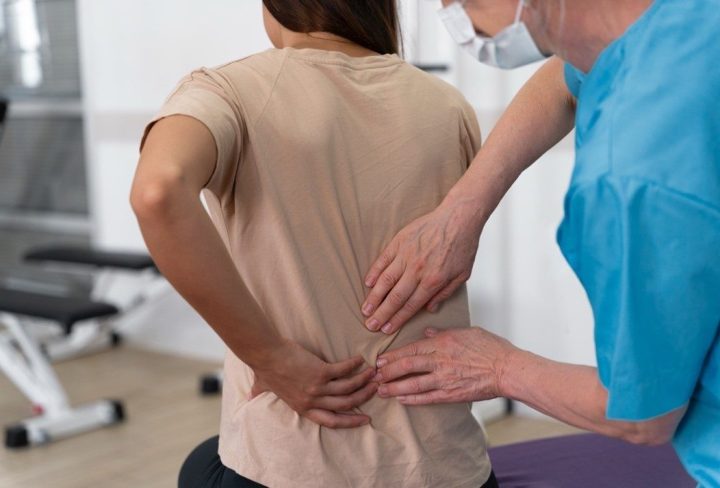A herniated disc can cause discomfort that affects a person’s ability to do daily work. Herniated disc surgery is sometimes necessary to relieve pain and other symptoms.
- A person’s surgery depends on several factors. These include where the herniated disc is located, how bad the pain is, and how disabled it makes you.
- The degree of discomfort and impairment may influence the doctor’s recommendation for surgery.
- Rarely, a herniated disc may impact the nerves controlling the bowel and bladder. To release pressure in the nerves and recover bladder and bowel function, surgery will be required.
Procedure:
During the discectomy, the surgeon makes a small cut in the patient’s back to reach the spine. The part of the circle pressing on the nerve is then removed, lessening the negative effects. Sometimes, the entire circle may need to be removed and replaced with a fake plate, or the vertebrae may need to be joined.
A doctor may use one of the following three techniques to relieve the pressure on the nerve:
- Open dissecting: The doctor performs open surgery to remove the herniated section of the disc.
- Endoscopic surgery: the doctor uses a long thin tube, or endoscope, to remove the herniated section of the disc. Only a small scar will form, resulting in quick recovery.
- Surgery on the core of the spinal disc: The doctor uses instruments to reach the core of the spinal disc and then uses a vacuum to remove the core.
Other surgical interventions for a herniated disc are,
Laminotomy or laminectomy:
- Lamina is known as the vertebrae that covers and protects the spinal. To treat herniated discs, doctors might need to remove a few parts of the lamina.
- A laminectomy removes the whole lamina, whereas a laminating is just parts of the lamina.
- In the middle of both surgeries, a small incision is made above the herniated disc in the back or neck. The surgeon removes the herniated disc during a discectomy after some or all of the lamina has been removed.
- Lumbar or cervical laminotomies and laminectomies are possible:
Lumbar procedures:
- These assist in treating sciatica or leg discomfort resulting from a herniated disc in the lower back.
- Cervical operations are performed to relieve pain in the neck and upper limbs caused by a herniated disc in the neck region.
Spinal fusion:
- To stabilize the spine after a laminotomy or laminectomy, a spinal fusion (SF) can be required. The process of an SF entails screwing two bones together.
- After undergoing an SF, some people may feel pain and that their range of motion is being restricted.
Artificial disc surgery:
- Artificial disc surgery (ASD) is an option. In ADS, the surgeon replaces the injured disc with an artificial one.
- Compared to SF techniques, a surgeon often correlates this method with reduced discomfort and restricted movement.
Recovery
Most people can go home 24 hours after a herniated disc operation. The patients must avoid the following activities for 4-5 weeks:
- Driving
- Limiting heavyweights
- Bending over
- Sitting for long periods
Always consult with a spine specialist to understand the best treatment approach for your specific condition.

